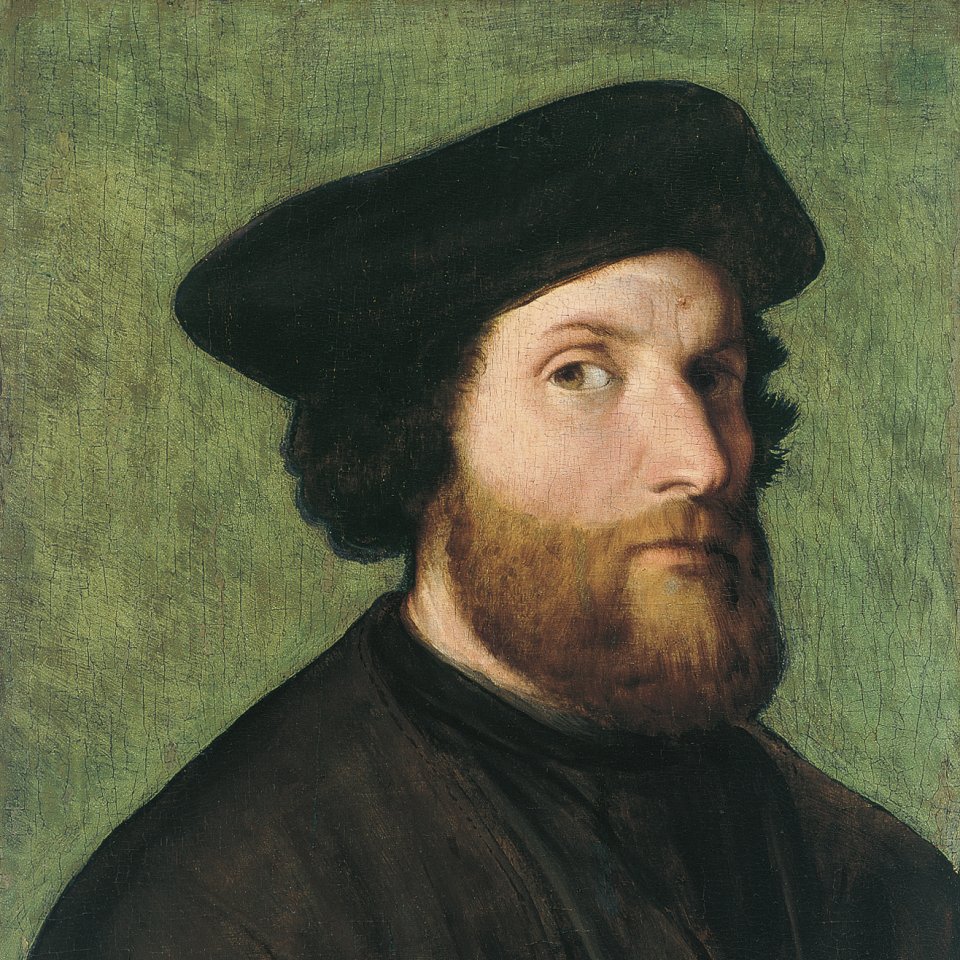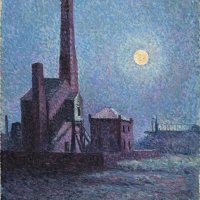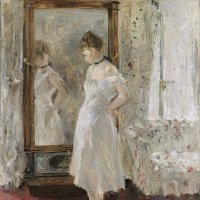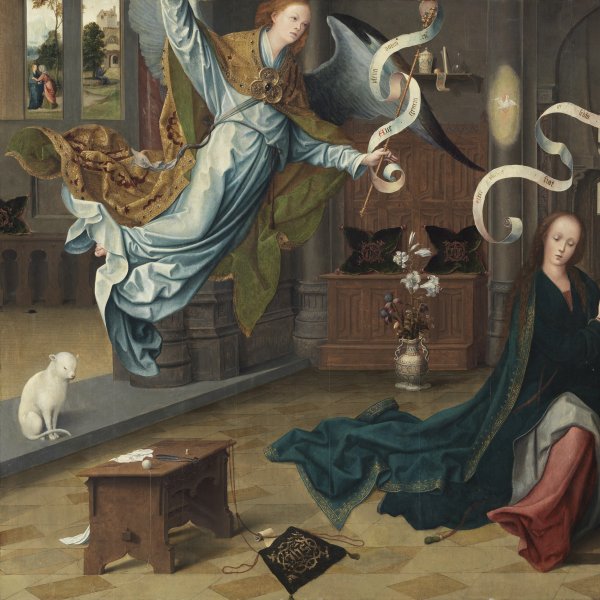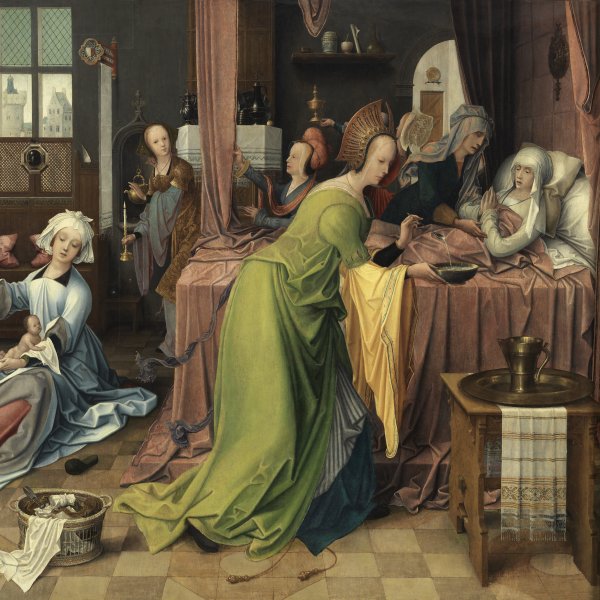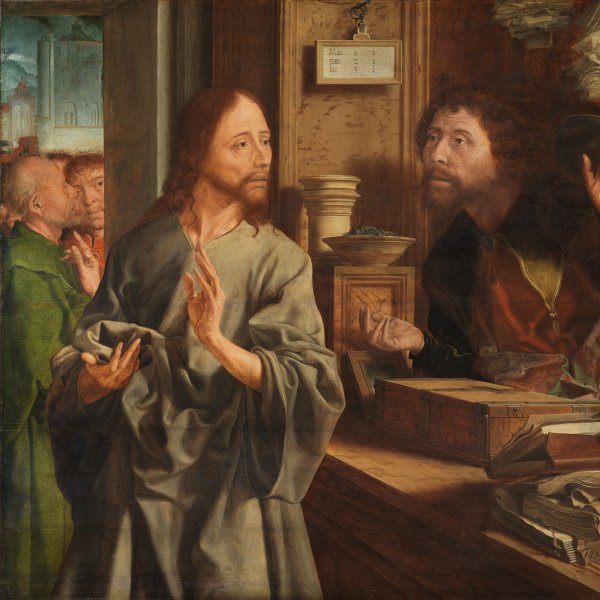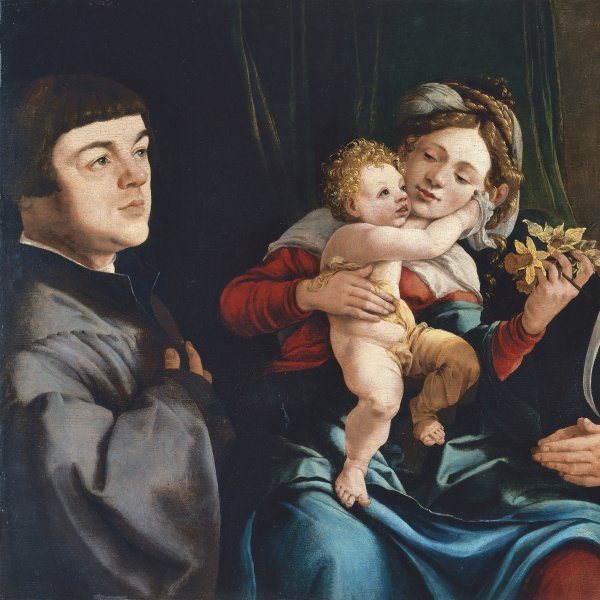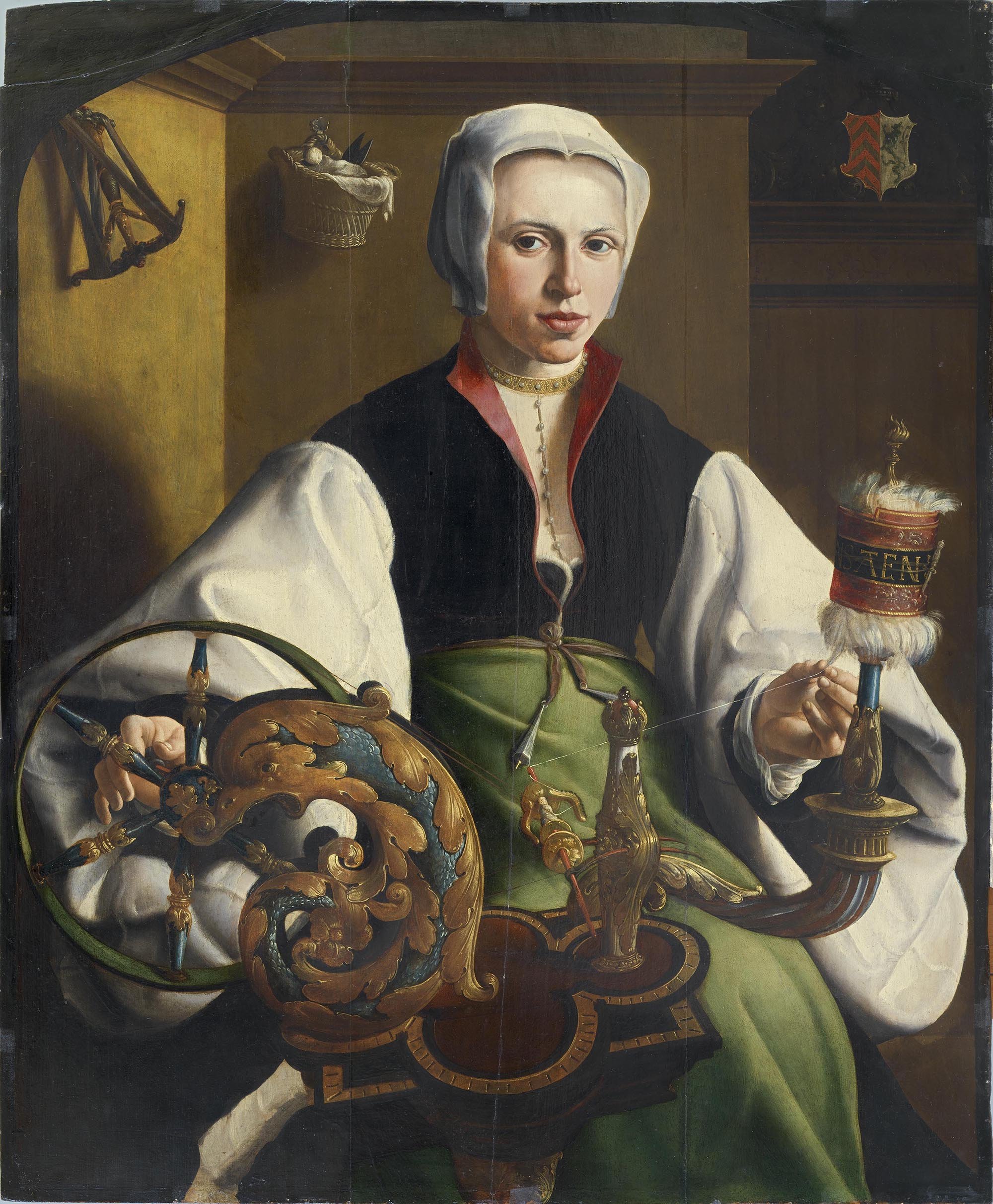Portrait of a Lady spinning
Maerten van Heemskerck was a painter, designer of prints and draughtsman active in the 16th century. He travelled to Italy where he was able to study Raphael and Michelangelo’s frescoes and his work became widely known through engravings. This portrait of a young woman spinning is one of his finest early paintings, although not the only one in which he depicts this subject. In some versions the woman is accompanied by a young man or a boy who offers her wine or an apple to tempt her, but she resists and thus personifies the virtuous woman. In the present panel the woman is located in the foreground, filling all the pictorial space. The elaborate spinning wheel is a striking element as is her plain, dark clothing that stands out for its simplicity against the room in which the figure is set. The only decorative elements are a work-basket, a yarn winder and a coat-of-arms on the back wall. It has been suggested that the sitter was the wife of a member of the Haarlem town council, the city in which the artist lived, or a member of one of the city’s leading families, but these ideas have not been proved.
During the 16th century, painting in the Netherlands underwent a transformation, abandoning the intimate, religious compositions used by the early Flemish artists that has so brilliantly typified the 15th century. As in other artistic centres, Flanders turned to Italian models and painting gradually incorporated motifs and compositions deriving from the new trend. Within this panorama there were artists who succeeded in combining Italian elements with traditional models, while there were others who incorporated the most striking elements from the new style, giving rise to an original and distinctive trend.
The present portrait was acquired by Baron Hans Heinrich Thyssen-Bornemisza in 1970. Earlier in the century it was in the collection of the Earl of Caledon, County Tyrone (Northern Ireland) where it was to be found in 1915. From there it passed to Pinakos in New York, and from there to Agnew’s Gallery in London. It was acquired for the Collection at Villa Favorita from Agnew’s.
Heemskerck worked with Jan van Scorel, an artist who had visited Italy and studied the work of Raphael, Michelangelo and the Venetian painters. The influence of Van Scorel on Heemskerck at the time that the present painting was executed was considerable, explaining why this work was at one point attributed to the former artist. Generally dated to around 1531 before Heemskerck’s trip to Italy, the panel has been compared to the 1529 Portrait of Anna Codde in the Rijksmuseum in Amsterdam in which Heemskerck also depicted his sitter spinning in an interior. In the present work the artist locates a fine, ornate spinning wheel in the foreground, at which the woman is busily working. The setting is a plain interior with bare walls, from which hang a sewing basket with scissors in the background and a yarn winder on the left. The figure is painted in a powerful, volumetric manner with her hands and face modeled by the bright light. A limited range of tones are used for her figure and clothes, creating large areas of colour such as the white of her ample sleeves, headdress and blouse, the green of her apron, and the black bodice that contrasts with its red lining. The richness and detail evident in both the figure and the spinning wheel, as well as the textures of the different materials, create a vivid contrast with the plain interior.
It has been suggested that this painting would have formed a pair with a second panel depicting the woman’s husband in a way similar to the artist’s celebrated portrait of Anna Codde, who is paired with an image of her husband Peter Bicker. The depiction of a woman presented as a virtuous housewife at work in a domestic interior has been related to Proverbs, chapter 31 in which the virtues of the good wife are praised. The image of a woman spinning was a recurring motif in Dutch art and was intended to emphasise the chastity of wives in the face of temptation. An engraving in the Musée du Louvre should be interpreted in this manner. It depicts a boy seated on the ground offering an apple (symbol of Original Sin) to a woman who focuses on her spinning wheel and ignores him. The symbolism is more overt in a painting by Pieter Pietersz. in the Rijksmuseum, Amsterdam, dated 1570 in which a girl with a spindle and yarn winder ignores a young man seated next to her who attempts to seduce her, offering her a jug of wine. Immune to his attentions, the young woman looks gravely out at the sitter.
The present figure has been identified as the wife of Pieter Jan Foppeszoon, a member of the Haarlem city council. She is depicted in a group family portrait with her husband and children, but this suggestion has not been generally accepted. The coat-of-arms in the background on the right and the woman’s immaculate, elegant clothes with their delicate details such as the buttons, the neck of the blouse and the decorative elements that terminate the two ends of her belt have led to the suggestion that she may be a member of a wealthy family such as the Van Dordt, Van Voerst or Van Voorst. The painting has been considered one of the most monumental and harmonious among Heemskerck’s early output.
Mar Borobia

